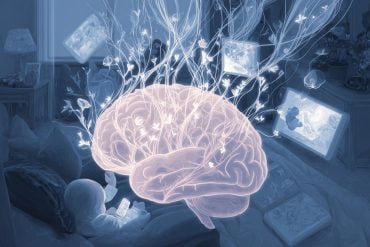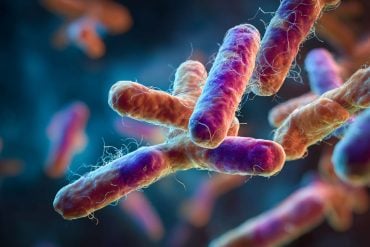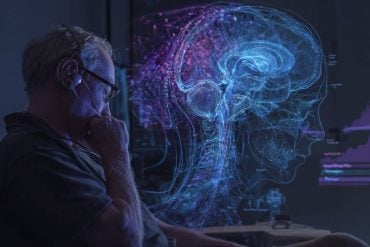Summary: In a groundbreaking collaboration, scientists created the first complete brain-wide map of decision-making in mammals, charting the activity of more than 600,000 neurons across 279 regions in mice. Using steering wheel tasks and high-density electrode recordings, they found that decision-related signals are far more widely distributed across the brain than previously thought.
This challenges older models focused on small regions and shows that movement-related areas also contribute to cognition. The unprecedented dataset now serves as a resource for neuroscientists worldwide, offering a foundation for testing new theories of how the brain guides choices.
Key Facts
- Massive Dataset: 620,000 neurons recorded from 139 mice across 22 labs.
- Distributed Signals: Decision-making activity appeared in both cognitive and movement regions.
- Global Collaboration: Largest international neuroscience effort of its kind, integrating standardized methods and open datasets.
Source: Princeton
Mice turning tiny steering wheels to move shapes on a screen have helped scientists produce the first brain-wide map of decision-making at single-cell resolution in a mammal.
For decades, most neuroscience studies have focused on small clusters of cells in isolated brain regions.
“But this method is flawed,” said Ilana Witten, Ph.D., a professor of neuroscience at Princeton University and a Howard Hughes Medical Institute investigator.

“The brain is constantly making decisions during everyday life, and we’ve come to realize that there are many brain regions, rather than just one or two regions, contributing to decision-making.”
Witten, working with the International Brain Laboratory (IBL)—a global consortium of 22 labs across Europe and the U.S.—combined the reach of multiple laboratories to better understand the complexity of decision-making in the brain by using a shared, standardized approach to track neural activity during behavior.
The resulting datasets, published in two papers September 03 in the journal Nature, reveal the activity of more than 600,000 neurons across 279 brain regions in 139 mice, offering an unprecedented view of how distributed neural networks work together to guide decision-making.
A collaborative leap forward for neuroscience
Mapping an entire brain in action, even one as small as a mouse’s, is an immense challenge.
“This had never been done before,” said Alejandro Pan Vazquez, Ph.D., an associate research scholar in the Witten lab, and a contributing author on both papers. “There was a lot of innovation on the organizational side of things for this project in order to integrate the data from different labs. This turned out to be the first time such a large collaboration like this had ever been done in neuroscience.”
To overcome this challenge, three Princeton University labs – one headed by Witten and the others by Tatiana Engel, Ph.D., an associate professor of neuroscience, and Jonathan Pillow, Ph.D., professor of neuroscience— helped support this collaboration by coordinating efforts among the participating laboratories and establishing rigorous quality-control metrics, designing experimental parameters, collecting data, and developing standardized analysis pipelines that allowed the data to be combined into a single resource for everyone to analyze.
Steering wheels and flashing circles
The task was deceptively simple task. Mice sat in front of a screen that intermittently displayed a black-and-white striped circle for a brief amount of time on either the left or right side. A mouse could earn a sip of sugar water if they quickly moved the circle toward the center of the screen by operating a tiny steering wheel in the same direction, often doing so within one second.
On some trials, the circle was faint, requiring the animal to rely on past experience to make a guess, which allowed researchers to study how expectations influence future decisions.
While the mice performed the task, researchers recorded brain activity using high-density electrodes that allowed them to monitor hundreds of neurons across many regions simultaneously. The work was divided across the participating labs, so that each lab mapped a particular region of the mouse brain. The pooled dataset covers 620,000 neurons recorded from 139 mice in 12 labs, encompassing nearly the entire brain.
Surprising findings
The resulting map revealed that decision-making activity is distributed across the brain, including in areas traditionally associated with movement rather than cognition.
“One of the important conclusions of this work is that decision-making is indeed very broadly distributed throughout the brain, including in regions that we formerly thought were not involved,” Witten said.
The published findings are also “in a sense advertising this unique dataset,” Witten said. “They describe what the dataset is composed of, what it looks like, and provide a resource for the field to use for further analyses. We hope these papers inspire others to investigate the data and make new discoveries with it.”
Ultimately, the researchers believe that the results of their work can be used as a benchmark for testing new theories about decision making, thereby advancing the field of neuroscience.
A map made across the world
Above all, just getting 22 globe-spanning labs to work towards a common goal is a success in it of itself. It also demonstrates the power of large-scale, coordinated neuroscience.
“The brain-wide map is undoubtedly an impressive achievement, but it marks a beginning, not the grand finale,” Engel said. “The IBL has shown how a global team of scientists can unite, pushing each other beyond comfort zones into uncharted territories no single lab could reach alone.”
Funding: Support for the research was provided by the National Institutes of Health (NIH U19NS12371601), National Science Foundation (NSF 1707398), Gatsby Charitable Foundation (GAT3708), Wellcome Trust (216324), Simons Foundation, Max Planck Society, and the Humboldt Foundation.
About this brain mapping and decision making research news
Author: Daniel Vahaba
Source: Princeton
Contact: Daniel Vahaba – Princeton
Image: The image is credited to Neuroscience News
Original Research: Open access.
“A brain-wide map of neural activity during complex behaviour” by Tatiana A. Engel et al. Nature
Open access.
“Brain-wide representations of prior information in mouse decision-making” by Tatiana A. Engel et al. Nature
Abstract
A brain-wide map of neural activity during complex behaviour
A key challenge in neuroscience is understanding how neurons in hundreds of interconnected brain regions integrate sensory inputs with previous expectations to initiate movements and make decisions.
It is difficult to meet this challenge if different laboratories apply different analyses to different recordings in different regions during different behaviours.
Here we report a comprehensive set of recordings from 621,733 neurons recorded with 699 Neuropixels probes across 139 mice in 12 laboratories.
The data were obtained from mice performing a decision-making task with sensory, motor and cognitive components.
The probes covered 279 brain areas in the left forebrain and midbrain and the right hindbrain and cerebellum. We provide an initial appraisal of this brain-wide map and assess how neural activity encodes key task variables.
Representations of visual stimuli transiently appeared in classical visual areas after stimulus onset and then spread to ramp-like activity in a collection of midbrain and hindbrain regions that also encoded choices.
Neural responses correlated with impending motor action almost everywhere in the brain. Responses to reward delivery and consumption were also widespread.
This publicly available dataset represents a resource for understanding how computations distributed across and within brain areas drive behaviour.
Abstract
Brain-wide representations of prior information in mouse decision-making
The neural representations of prior information about the state of the world are poorly understood.
Here, to investigate them, we examined brain-wide Neuropixels recordings and widefield calcium imaging collected by the International Brain Laboratory. Mice were trained to indicate the location of a visual grating stimulus, which appeared on the left or right with a prior probability alternating between 0.2 and 0.8 in blocks of variable length.
We found that mice estimate this prior probability and thereby improve their decision accuracy.
Furthermore, we report that this subjective prior is encoded in at least 20% to 30% of brain regions that, notably, span all levels of processing, from early sensory areas (the lateral geniculate nucleus and primary visual cortex) to motor regions (secondary and primary motor cortex and gigantocellular reticular nucleus) and high-level cortical regions (the dorsal anterior cingulate area and ventrolateral orbitofrontal cortex).
This widespread representation of the prior is consistent with a neural model of Bayesian inference involving loops between areas, as opposed to a model in which the prior is incorporated only in decision-making areas.
This study offers a brain-wide perspective on prior encoding at cellular resolution, underscoring the importance of using large-scale recordings on a single standardized task.






